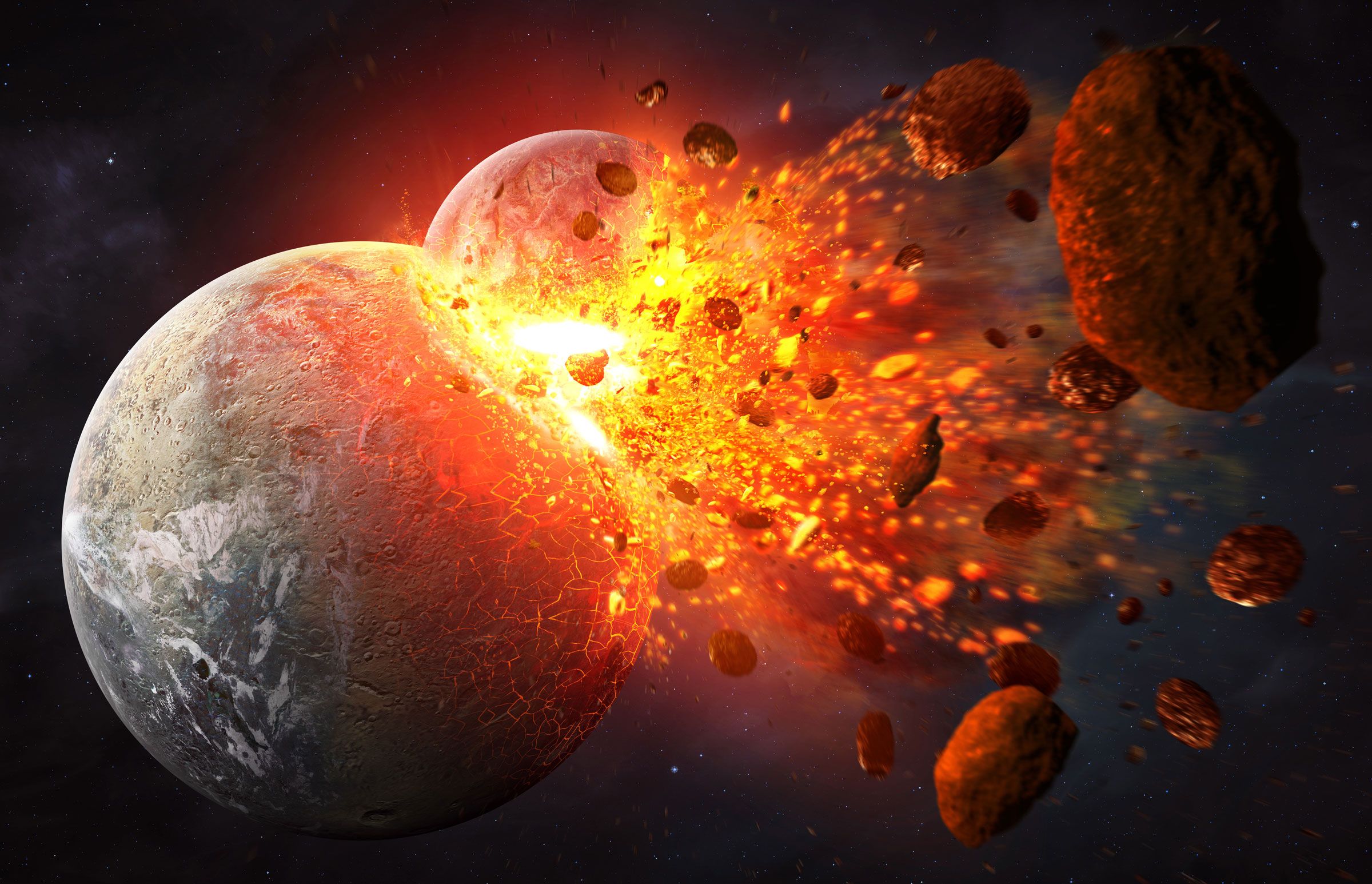A Collision With Another Planet Could Have Allowed for Life on Earth
Scientists have long pondered the origins of life on Earth and one intriguing theory proposes that a collision with another planet may have played a crucial role.
According to the giant-impact hypothesis, a Mars-sized planet known as Theia collided with early Earth billions of years ago. This collision led to the formation of the Moon and also may have provided the necessary ingredients for life to flourish on our planet.
The impact would have generated immense heat and created a debris disk around Earth. This debris could have delivered water and organic molecules, essential building blocks for life, to our planet.
Furthermore, the collision could have also helped create the conditions for plate tectonics and a magnetic field, which are essential for protecting life from harmful cosmic radiation.
Support for this theory comes from the similarity in isotopic compositions of Earth and Moon rocks, suggesting a common origin. Additionally, computer simulations have shown that such a collision could have produced the Moon’s orbit and tilted the Earth’s axis to its current position.
While this hypothesis remains speculative, it offers a fascinating explanation for the emergence of life on Earth. It suggests that without the dramatic collision with Theia, our planet may not have been hospitable to life as we know it today.
Further research and evidence gathering will be needed to fully understand the role that cosmic impacts have played in shaping our planet’s history and potential for life.
